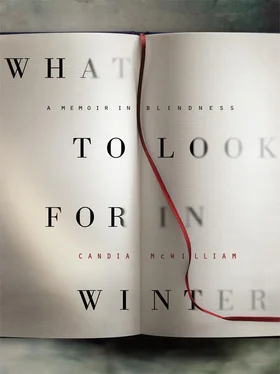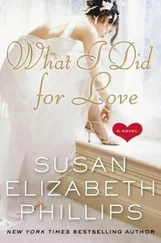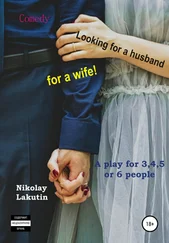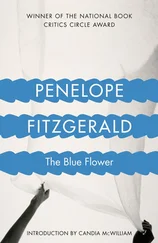Loyd was in America pursuing his career in the world of punk. Actually, now I come to think of it, I suppose the answer to the question posed in passing above, about who creates the world’s fashions and trends, is probably none other than Loyd Grossman, sauce-supremo and anagrammatical arts tsar, and other such poly-national panurges.
To a considerable degree, the meta-Loyd whom the public sees was a creation of the nineteen-eighties. When first I met him he was writing a doctorate at the LSE about the effect of distilled spirits on the eighteenth-century working class in London and the author of a crisp book about the history of rock music. How less direct might his trajectory have been had he settled down with me and written treatises on the lesser-known pupils of Verrocchio.
Many of my Cambridge friends had departed to become professors in America. Perhaps it was a Hogmanay on Colonsay that drove Simon Schama off these shores for good? He certainly hated it so much that he mentioned it on Desert Island Discs . I felt so sorry, but I understood exactly. It was a mixture of heartbreak, weather, and what he apprehended as a glimpse of unreconstructed Philistia at play. He took refuge in the library at Colonsay House that he pronounced to be a decent though unadventurous Whig library. The record he chose to epitomise his short sojourn on the island was the Sex Pistols’ ‘God Save the Queen’. I’m sad he got that glimpse, and I have seen things through those eyes too, but the truth is, as always, more complicated. My Oxford friends had settled into their vocations, Rosa into cell biology, Jamie Fergusson into the world of antiquarian bookselling, my friend Fram Dinshaw into becoming himself a don at Oxford. Niall Hobhouse had left Cambridge early and set up as an art dealer specialising in art and artefacts relating to India. He is now profoundly involved with the philosophy and practice of architecture and of public housing. His public service genes came to get him.
In the story of a life, according to the best-conducted experts on etiquette, there are but three times when one should appear in a newspaper: when one is born, when one dies and, in the middle, when one marries.
On our first date, Quentin Wallop told me that he would never ask anyone to marry him.
We became engaged not very long thereafter. We married on 10 February 1981 in the church of St Martin-in-the-Fields in Trafalgar Square. We chose the church with its sublime spire and then unrestored and umbrageous interior because Quentin was a dedicated circumnavigator of the globe under sail and it is the church of seafarers, and for its architecture, and on account of the charitable work it does among the addicts and the homeless of London.
My father, that is, my blood parent, had suggested that we marry in St Magnus the Martyr, for T.S. Eliot: ‘Inexplicable splendour of Ionian white and gold’. But there was some problem with parking.
Eyes were very important in our swift courtship. Quentin saw me across a room in Marsham Court where he was living. My impression was of hand-painted wallpaper, celadon in tone, and a young man with gold hair not apparently enjoying his own party. We did not speak. No one introduced us. I had just returned from India, where I had gone to convince a friend that it was home that he was pining for and not me, so I was rather thin and must have seemed interesting on account of not having slept for some days. Quentin made enquiries as to who I was and moves were made towards an introduction. We were both motherless, both tall, both longing for affection, both serious about children and animals and we each believed that we could make the other happy. With so much breakage in our pasts, too many house-moves, too much unsettledness, we married, we felt, with our eyes and hearts open.
Another romance was shaking confetti over the nation at the time. I was surprised when pretty Lady Diana Spencer chose my dressmaker to make her wedding dress, but who could be annoyed for very long, when my handsome prince was there? Our (I cannot say ‘my’; it was ‘our’ wedding after all) wedding dress was entirely covered with glass sequins, each one colourless, each one exactly like a tiny pierced contact lens.
My dress had a million eyes and it was to the future that they were turned as I went down the aisle on Papa’s arm towards my groom in the soft gloom of that great church, thirty feet of Argos-eyed glass and white taffeta train pouring itself down the aisle behind me. Daddy was in a front pew, having professed himself delighted not to have to take a central role; I wonder now.
From the tiara that held up my hair, released for the day from the Bank of Montreal, fell a long veil over my face. It too was scattered with brilliant lenses that made me feel as though I was seeing the day and the man to whom it gave me through shining tears of unquestionable joy.
Were marriages so tidy as to be best composed of opposites, how well we might have done; but in some ways I think we were too profoundly alike and are able better to love one another when not under the same roof but equal in our love for our children. Quentin is incontrovertibly the hero type. He camps under the stars with the Tuareg, he walks the Karakoram Highway, he loves the Hindu Kush, he is involved in the rehabilitation of boy soldiers in Sierra Leone. He works for the Red Cross. He does hidden good. When we met I thought he was ridiculously handsome with golden hair and a terrific beak like the old Duke of Wellington and he knew how to do things. I thought that it was pretty much as exotic as being able to stay on a bucking bronco to be able to drive, so it was inevitable that I became infatuated with this person who could do so much that I could not and to whom I felt I had so much to give. I did feel he was a kind of merman and it is the cruellest of fates to which, to this day, he will not allude, that his beautiful boat, Ocean Mermaid , launched by his mother, was burned in an accidental shipyard fire long after we parted.
However, it is restorative to see him on one of his hunters, Gus, Monty or Graf, and realise that he is once again connecting himself with the life for which he was made and that is in his blood.
In the dining room at his house at Farleigh are two tall portraits by Sir Francis Grant, depicting Isaac Newton Wallop, the 5th Earl, and his wife, Lady Eveline Herbert. The 5th Earl refused a marquessate and the Garter from Gladstone, thinking them ‘beyond his merits’. This Earl and Countess had twelve children and she embroidered a chair cover during each pregnancy, still managing somehow, in between all of it, to gather up into her social life, albeit briefly, Henry James, who wrote to his father from Eggesford, the Portsmouth house in Devon:
I am paying a short visit at what I suppose is called here a ‘great house’, vis. at Lord Portsmouth’s. Lady P, whom I met last summer at Wenlock Abbey and who is an extremely nice woman, asked me a great while since to come here at this point, for a week. I accepted for three days, two of which have happily expired — for when the moment came I was very indisposed to leave London. That is the worst of invitations, given you so long in advance, when the time comes you are apt to be not at all in the same humour as when they were accepted…
The place and country are, of course, very beautiful and Lady P, ‘most kind’; but though there are several people in the house (local gentlefolk, of no distinctive qualities) the whole thing is dull. This is a large family, chiefly of infantine sons and daughters (there are twelve!) who live in some mysterious part of the house and are never seen. The one chiefly about is Lord Lymington, the eldest one, an amiable youth of twenty-one attended by a pleasant young Oxford man, with whom he is ‘reading’. Lord P. is simply a great hunting and racing magnate, who keeps the hounds in this part of the country, and is absent all day with them. There is nothing in the house but pictures of horses — and awfully bad ones at that.
Читать дальше











